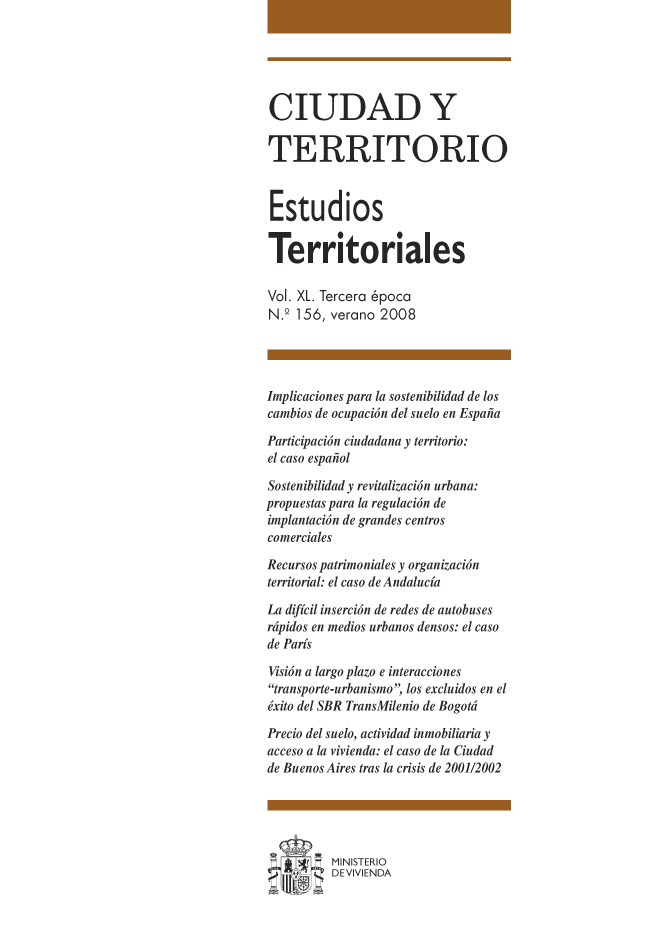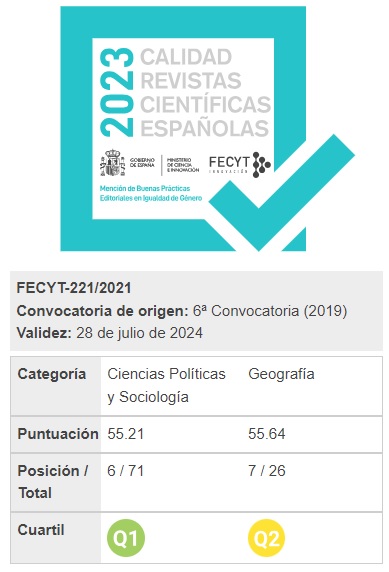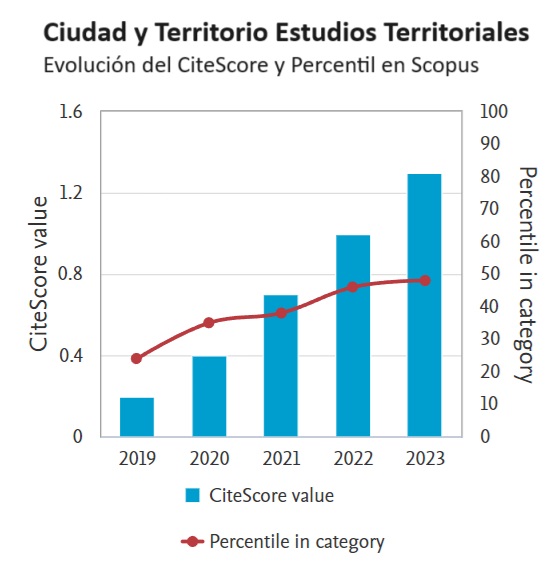Natural and Cultural Heritage and Spatial Organization: Andalusia as a Case in Point
Keywords:
Gestión de recursos, planificación territorial, políticas de desarrollo, AndalucíaAbstract
The article sets out to identify and categorise what offi cially constitutes what might constitute the natural
and cultural heritage in Andalusia, focusing above all on the spatial dimension of this. To do so, the territorial
divisions laid down by the “Bases para una Carta sobre Patrimonio y Desarrollo en Andalucia” [Groundwork
for Mapping out Patrimony and Development in Andalusia] are here used with their criteria for urban and
coastal areas, fertile river plains, lowlands and mountain fastnesses. The natural heritage is given attention
to fi rst and then the cultural one. In both cases conservation fi gures existing at the international, national
and regional level are offered these understood in terms of their aforementioned territorial units. The fi ndings
of the study would seem to show that any sort of heritage sited within a any given territory must be
understood as an integral part of a whole if that heritage is to become useful for development, and, in the
light of this, the territorial distribution of heritage as explained in the paper could well prove to be a good
starting point for future refl ection.
Downloads
Downloads
Published
How to Cite
Issue
Section
License
Copyright (c) 2008 Geografía y Desarrollo Regional y Urban (GDRU)

This work is licensed under a Creative Commons Attribution-NonCommercial-NoDerivatives 4.0 International License.
Considering the provisions of the current legislation on Intellectual Property, and in accordance with them, all authors publishing in CyTET give -in a non-exclusive way and without time limit- to the Ministry of Transport, Mobility and Urban Agenda the rights to disseminate, reproduce, communicate and distribute in any current or future format, on paper or electronic, the original or derived version of their work under a Creative Commons Attribution-NonCommercial-NoDerivative 4.0 license International (CC BY-NC-ND 4.0), as well as to include or assign to third parties the inclusion of its content in national and international indexes, repositories and databases, with reference and recognition in any case of its authorship.
In addition, when sending the work, the author(s) declares that it is an original work in which the sources that have been used are recognized, committing to respect the scientific evidence, to no longer modify the original data and to verify or refute its hypothesis. Author(s) also declare that the essential content of the work has not been previously published nor will it be published in any other publication while it is under evaluation by CyTET; and that it has not been simultaneously sent to another journal.
Authors must sign a Transfer of Rights Form, which will be sent to them from the CyTET Secretariat once the article is accepted for publication.
With the aim of promoting the dissemination of knowledge, CyTET joins the Open Journal Access (OA) movement and delivers all of its content to various national and international indexes, repositories and databases under this protocol; therefore, the submission of a work to be published in the journal presupposes the explicit acceptance by the author of this distribution method.
Authors are encouraged to reproduce and host their work published in CyTET in institutional repositories, web pages, etc. with the intention of contributing to the improvement of the transfer of knowledge and the citation of said works.








 Enlace a CyTET en Linkedin
Enlace a CyTET en Linkedin